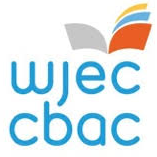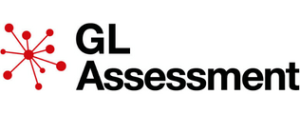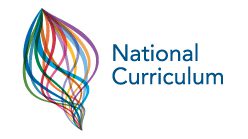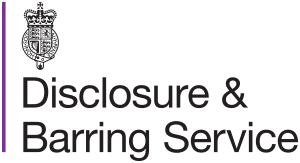GCSE Maths
Exam Boards Covered: AQA, OCR, Edexcel, Educas
As with our English and science teachers, all our GCSE Maths teachers are subject specialists, making them very familiar with the new, and more challenging, specification for Maths, at both foundation and higher tier levels. In the main, GCSE Maths is getting more challenging and demanding for everyone.
The changes to GCSE Maths can be summarised as follows:-
- More content to be taught with the introduction of more difficult topics.
- More emphasis on higher-order skills of problem-solving and mathematical reasoning, with more marks being allocated in the exams to these skills.
- The need for children to memorise formulae.
- The increase in total examination time.
- A new grading structure from 9 to 1, with fewer marks at the lower grades and more marks at the higher grades.
All exam boards offer a Foundation tier (grades 1 to 5) and a Higher tier (grades 4 to 9). Pupils must take three papers at the same tier. All papers must be taken in the same series.
Topics Covered in GCSE Maths
The following table shows a general list of Foundation Tier Topics for GCSE maths:
Number
- Basic arithmetic
- Negative number
- Powers and roots
- Primes, factors and multiples
- Order of operation (BODMAS)
- HCF and LCM
- Use of a calculator
- Working with
- Decimals
- Fractions
- Percentages
- Reverse percentages
- Growth and decay, including simple/compound interest
- Working with ratios
- Direct/inverse proportion
- Indices
- Units
- Standard
- Converting area and volume units
- Simplifying/rationalising surds
- Standard form
- Estimation
- Estimate powers and roots
- Capture/recapture questions
- Counting combinations
- Upper/lower bounds, error intervals
- Recurring decimals
Geometry
- Angles and parallel lines
- Area and perimeter
- Volume
- Circles, arcs and sectors
- Polygons
- Congruence
- Similar shapes
- Length
- Area and volume
- Pythagoras’ Theorem
- SOH/CAH/TOA
- Sine rule/cosine rule/area formula
- Exact trigonometry values
- 3D trigonometry
- Transformations
- Rotations
- Translations
- Enlargement
- Successive transformations and invariance
- Bearings
- Loci and constructions
- Vectors
- Circle theorems
- Proofs of circle theorems
- Plans and elevations
Statistics and Probability
- Interpreting and representing data
- Stem and leaf diagrams
- Sampling
- Averages
- Quartiles and box plots
- Cumulative frequency
- Histograms
- Scatter diagrams and correlation
- Probability
- Relative frequency/experimental probability
- Tree diagrams
- Sets and Venn diagrams
- Conditional probability
- Frequency trees
Algebra
- Algebraic manipulation
- Forming and solving equations
- Expanding and factorising
- Expanding three brackets
- Linear simultaneous equations
- Quadratic simultaneous equations
- Solving simultaneous equations graphically
- Factorising/solving quadratics equations
- Factorising more challenging equations
- Completing the square
- The quadratic formula
- Changing the subject of a formula
- Algebraic fractions
- Functions
- Proof
- Iteration
- Graphs
- Straight line
- Quadratic and cubic
- Trig and exponential
- Reciprocal
- Real life
- Speed/time
- Linear inequalities
- Estimating areas under graphs
- Equation of a circle
- Transformations of functions
- Rates of change/gradients
- Solving linear inequalities
- Solving quadratic inequalities
- Nth term of arithmetic/Fibonacci sequences
- Quadratic sequences
- Recurrence relations
- Geometric progressions/exponential growth and decay
The following table shows a general list of Higher Tier Topics for GCSE maths:
Number
- Rounding numbers
- Add and subtract numbers
- Multiplication and division
- Estimation
- Using calculations
- Order of operation (BODMAS)
- Ordering
- Decimals
- Fractions
- Arithmetic with decimals
- Multiples and factors
- Prime numbers
- Square numbers and square roots
- Cube numbers and cube roots
- Product of prime numbers
- HCF and LCM
- Indices and negative indices
- Standard form
- Fractions of amounts
- Adding fractions
- Working with
- Decimals
- Percentages
- Working with fractions
- Amounts
- Adding
- Multiplying
- Dividing
- Percentages of amounts
- Reverse percentages
- Compound interest
- Ratio
- Currency
- Recipes
- Negative numbers
- Place value
- Function machine
- Error intervals
- Best buys
- Proportion
- Use of a calculator
Geometry
- Angle facts
- Types of angles
- Angles in parallel lines
- Angles in a triangle
- Angles in a quadrilateral
- Angles in polygons
- Bearings
- Perimeter
- Area
- Rectangles
- Triangles
- Trapezium
- Units
- Symmetry
- Lines
- Rotational
- Loci and constructions
- Faces, edges, vertices
- Views and elevations
- Surface area
- Speed, distance, time
- Density
- Pressure
- Timetables
- Volume
- Cuboid
- Prism
- Distance charts
- Transformations
- Rotations
- Translations
- Enlargement
- Reflections
- Circle
- Cirumference
- Area
- Volume of a cylinder
- Pythagoras’ Theorem
- Trigonometry
- Exact Trig values
- Arc length
- Area of a sector
- Similar shapes
- Congruent shapes
- Volume of a sphere/cone
- Surface area of a sphere/cone
- Vectors
- Nets
Statistics and Probability
- Frequency trees
- Two-way tables
- Pictograms
- Bar charts
- Frequency polygons
- Line graphs
- Pie charts
- Probability
- Listing outcomes
- Scatter graphs
- Stem and leaf diagrams
- Mean, medium, mode
- Range
- Estimating mean
- Venn diagrams
- Tree diagrams
- Reading tables
Algebra
- Writing expressions
- Collecting like terms
- Multiplying terms
- Coordinates
- Sequences
- The nth term
- Expanding brackets
- Factorising
- Factorising quadratics
- Solving equations
- Forming equations
- Inequalities
- Drawing linear graphs
- Substitution
- Changing the subject
- Simultaneous equations
- y = mx + c
- Graphs
- Parallel
- Quadratic
- Cubic
- Reciprocal
- Conversion
Structure of the GCSE Maths Exam Papers
Depending on the exam board, there are either two or three exam papers. At least one of the papers will be calculator based.
A variety of question styles are present in all papers, from short, single mark to multi step problems. As the pupil progresses through each paper, the mathematical demand increases.







